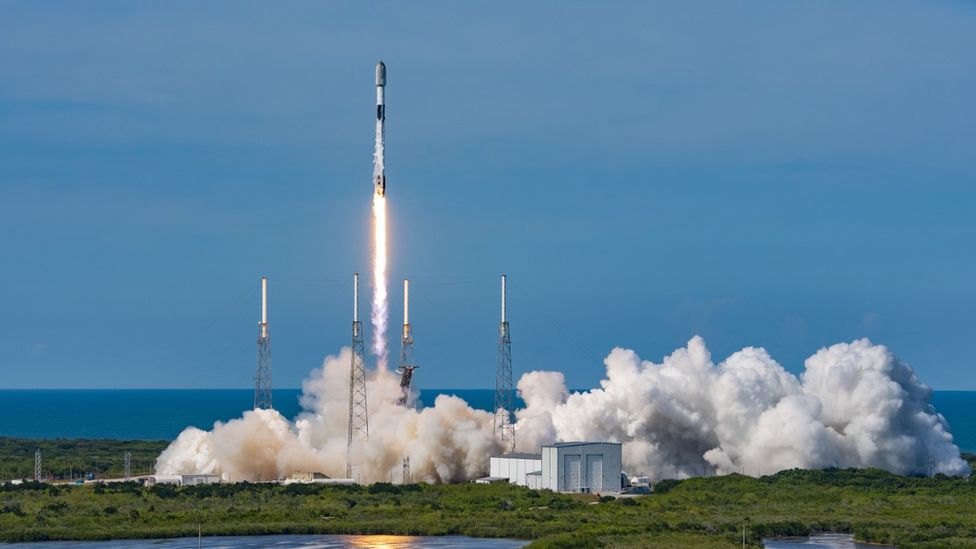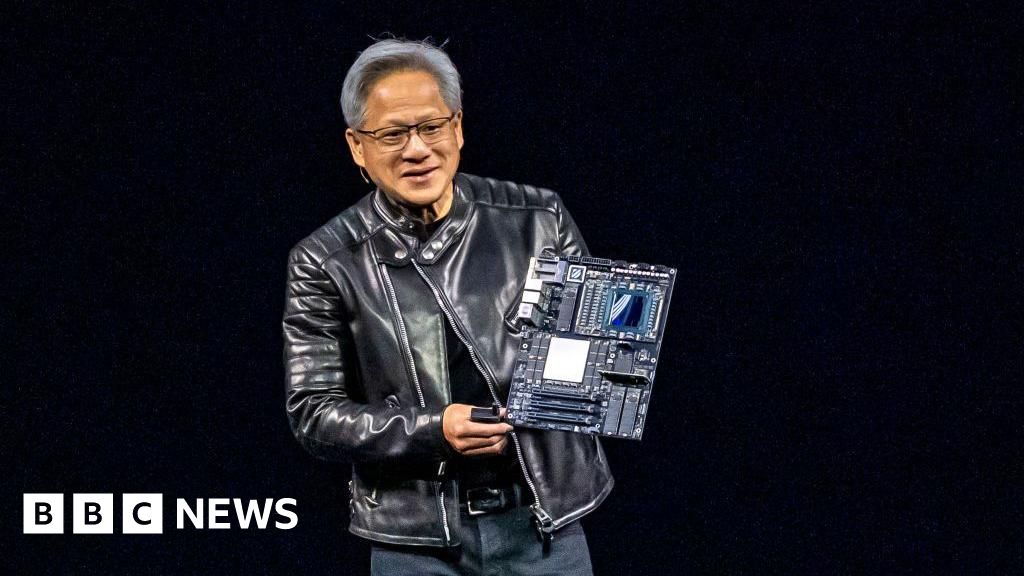ARTICLE AD BOX
 Image source, Starlink
Image source, Starlink
A SpaceX rocket blasts off from Cape Canaveral, carrying Starlink satellites
Elon Musk's SpaceX company has been launching thousands of satellites into orbit. Many people say they've seen them in the skies.
They're part of the Starlink project, which aims to provide high speed internet services from space, to remote areas on Earth.
What is Starlink and how does it work?
Starlink provides internet services via a huge network of satellites.
It is aimed at people who live in remote areas who cannot get high-speed internet.
"There are people in the UK in that category, but more across the world, in places like Africa," says Dr Lucinda King, Space Projects Manager at the University of Portsmouth.
Starlink's satellites have been put in low-level orbit around the Earth to make connection speeds between the satellites and the ground as fast as possible.
However, a great many low-level satellites are needed to provide full coverage of the globe.
It's thought Starlink has put some 3,000 of them into space since 2018. It may eventually use 10,000 or 12,000, says Chris Hall.
"Using satellites solves the problem of getting internet connections to remote locations in deserts and mountains," he says.
"It bypasses the need to build massive amounts of infrastructure, like cables and masts, to reach those areas."
How much does Starlink cost and who will use it?
Compared to standard internet providers, Starlink isn't cheap.
It charges customers $99 per month (£89 per month in the UK). The dish and router needed to connect to the satellites costs $549 (£529 in the UK).
However, 96% of households in the UK already have access to high-speed internet, as do 90% of households in the EU and the US.
"Most of the developed world is already well connected," says Professor Sa'id Mosteshar of London University's Institute of Space Policy and Law. "They're relying on a small share of the market for revenues."
The company says it has 400,000 subscribers in the 36 countries it currently covers - mostly in North America, Europe and Australasia. This is made up of both households and businesses.
Next year, Starlink plans to extend its coverage further across Africa and South America, and into Asia - regions of the world where internet coverage is more patchy.
"Starlink's prices may be too high for many households in Africa, say," says Chris Hall. "But it could play an important role in connecting schools and hospitals in remote areas there."
How is Starlink helping in Ukraine?
As Russian forces have advanced in Ukraine they have closed down Ukrainian internet services and tried to block social media.
Elon Musk made Starlink available in Ukraine immediately after the invasion started. About 15,000 of Starlink's sets of dishes and routers have been shipped to the country.
"Starlink has kept things going, like public services and government," says Chris Hall. "The Russians haven't found a way of disabling it."
It has also been used on the battlefield.
"Ukrainian forces are using it to communicate - for example, between headquarters and troops in the field," says Dr Marina Miron, defence studies researcher at Kings College London.
"Its signals cannot be jammed like ordinary radio signals can be, and it takes only 15 minutes to set up the kit."
Is Starlink creating space clutter?
In addition to Starlink, rivals such as OneWeb and Viasat - who also run satellite internet services - are putting thousands of satellites into low-Earth orbit.
That will lead to problems, says Sa'id Mosteshar.
"It makes space less and less safe in terms of collisions," he says.
"Satellites could hit other vessels and create fragments of wreckage and these, in turn, could cause a lot more damage when flying at high speeds."
"If there are too many fragments, it could make low-Earth orbit unusable in the future," says Dr King of Portsmouth University.
"And we may not be able to get out of low-Earth orbit into higher orbits, where our navigational satellites and telecoms satellites are situated."
Image source, Getty Images
Image caption,Starlink satellites often show up in photographs as streaks of light, obscuring stars and planets
Starlink's satellites are also creating problems for astronomers.
At sunrise and sunset, they may be seen by the naked eye because the sun glints off their wings.
This can cause streaks on telescope images, obscuring the view of stars and planets.
"Astronomers saw the problems early," says Professor Mosteshar. "They were the first to complain."

 2 years ago
44
2 years ago
44








 English (US) ·
English (US) ·